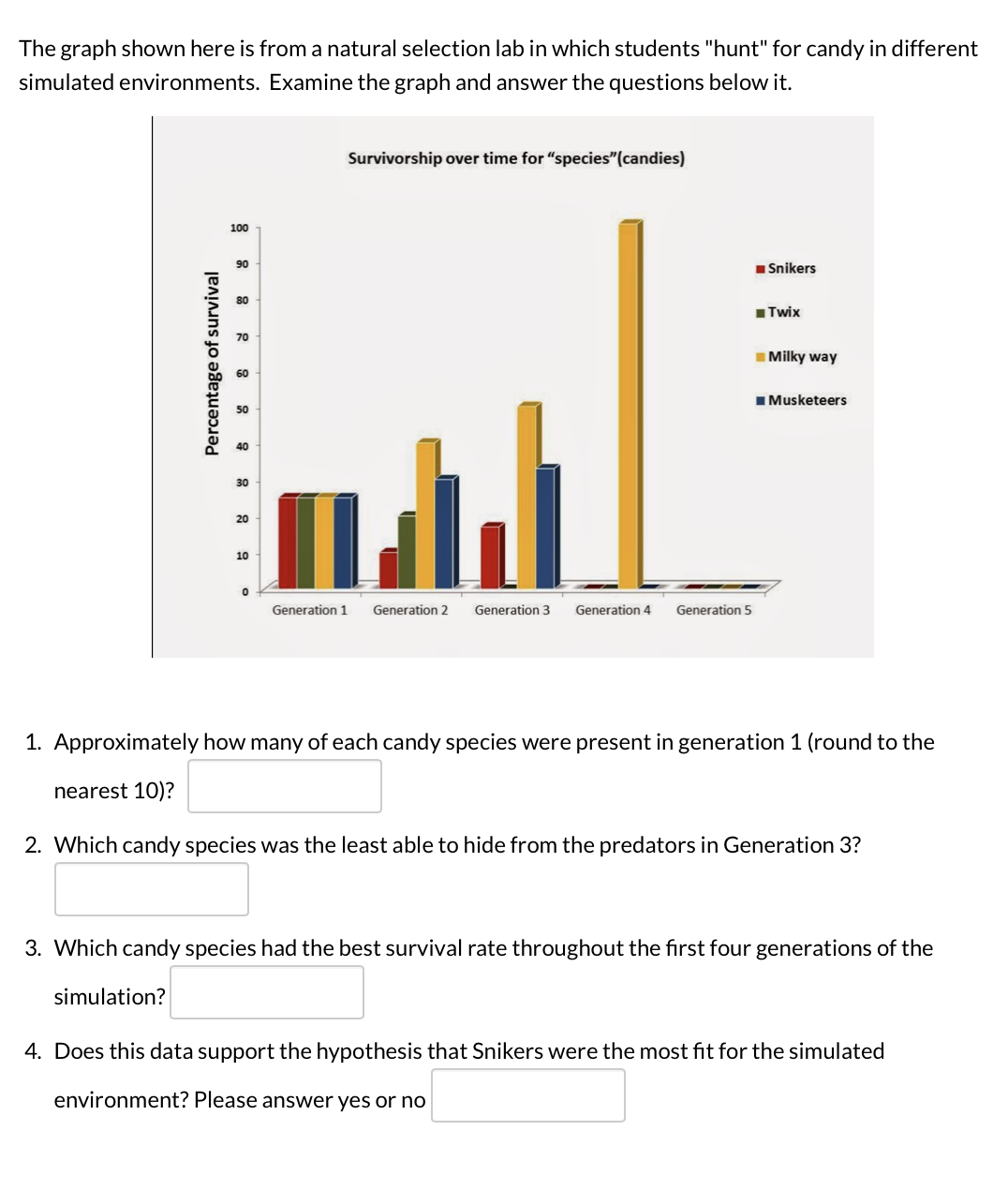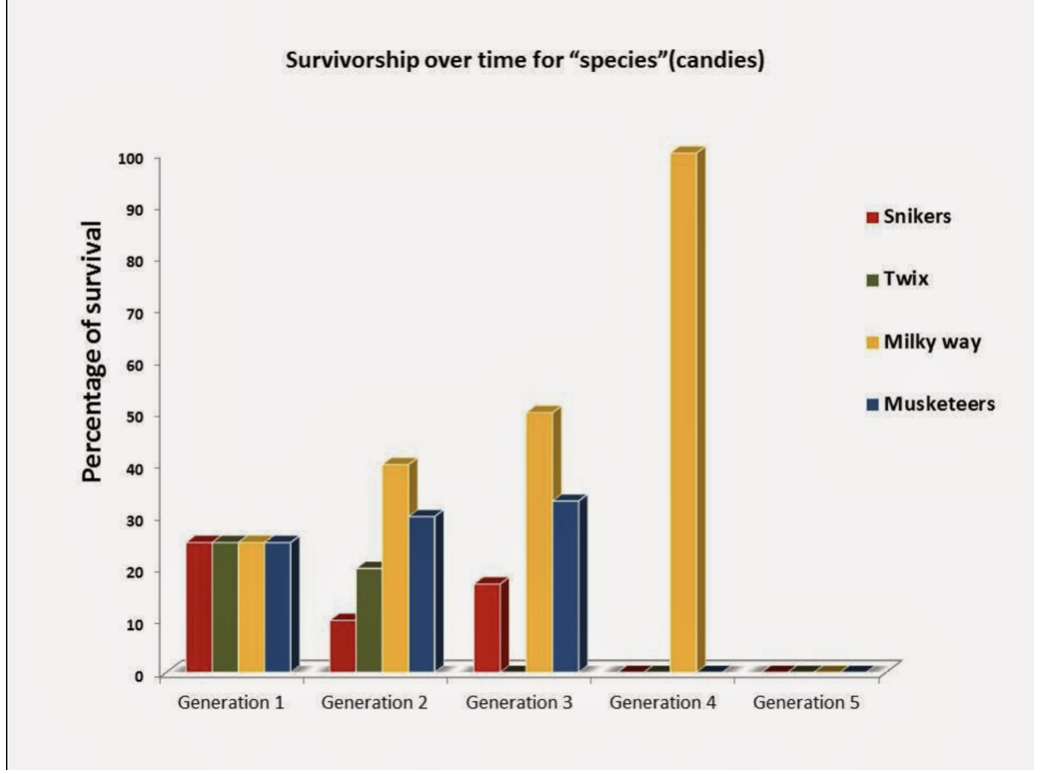The graph shown here is from a natural selection lab in which students "hunt" for candy in different simulated environments. Examine the graph and answer the questions below it. Approximately how many of each candy species were present in generation 1 (round to the nearest 10)? Which candy species was the least able to hide from the predators in Generation 3? Which candy species had the best survival rate throughout the first four generations of the simulation? Does this data support the hypothesis that Snikers were the most fit for the simulated environment? Please answer yes or no
The graph shown here is from a natural selection lab in which students "hunt" for candy in different simulated environments. Examine the graph and answer the questions below it. Approximately how many of each candy species were present in generation 1 (round to the nearest 10)? Which candy species was the least able to hide from the predators in Generation 3? Which candy species had the best survival rate throughout the first four generations of the simulation? Does this data support the hypothesis that Snikers were the most fit for the simulated environment? Please answer yes or no
Human Heredity: Principles and Issues (MindTap Course List)
11th Edition
ISBN:9781305251052
Author:Michael Cummings
Publisher:Michael Cummings
Chapter19: Population Genetics And Human Evolution
Section: Chapter Questions
Problem 3QP: How Can We Measure Allele Frequencies in Populations? Explain the connection between changes in...
Related questions
Question
The graph shown here is from a natural selection lab in which students "hunt" for candy in different simulated environments. Examine the graph and answer the questions below it.
- Approximately how many of each candy species were present in generation 1 (round to the nearest 10)?
- Which candy species was the least able to hide from the predators in Generation 3?
- Which candy species had the best survival rate throughout the first four generations of the simulation?
- Does this data support the hypothesis that Snikers were the most fit for the simulated environment? Please answer yes or no

Transcribed Image Text:The graph shown here is from a natural selection lab in which students "hunt" for candy in different
simulated environments. Examine the graph and answer the questions below it.
Survivorship over time for "species"(candies)
100
1 Snikers
Twix
Milky way
I Musketeers
50
30
20
10
Generation 1
Generation 2
Generation 3
Generation 4
Generation 5
1. Approximately how many of each candy species were present in generation 1 (round to the
nearest 10)?
2. Which candy species was the least able to hide from the predators in Generation 3?
3. Which candy species had the best survival rate throughout the first four generations of the
simulation?
4. Does this data support the hypothesis that Snikers were the most fit for the simulated
environment? Please answer yes or no
Percentage of survival

Transcribed Image Text:Survivorship over time for "species"(candies)
100
90
1 Snikers
80
Twix
70
Milky way
60
I Musketeers
50
40
30
20
10
Generation 1
Generation 2
Generation 3
Generation 4
Generation 5
Percentage of survival
Expert Solution
This question has been solved!
Explore an expertly crafted, step-by-step solution for a thorough understanding of key concepts.
Step by step
Solved in 5 steps

Knowledge Booster
Learn more about
Need a deep-dive on the concept behind this application? Look no further. Learn more about this topic, biology and related others by exploring similar questions and additional content below.Recommended textbooks for you

Human Heredity: Principles and Issues (MindTap Co…
Biology
ISBN:
9781305251052
Author:
Michael Cummings
Publisher:
Cengage Learning


Human Heredity: Principles and Issues (MindTap Co…
Biology
ISBN:
9781305251052
Author:
Michael Cummings
Publisher:
Cengage Learning
